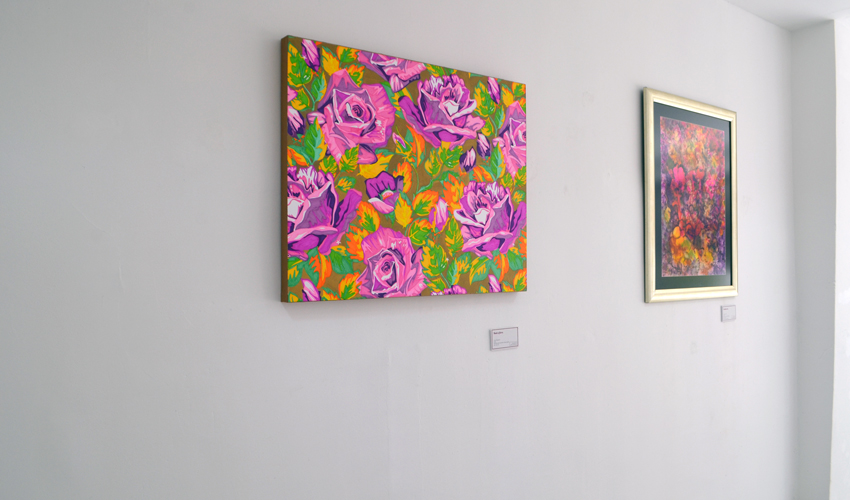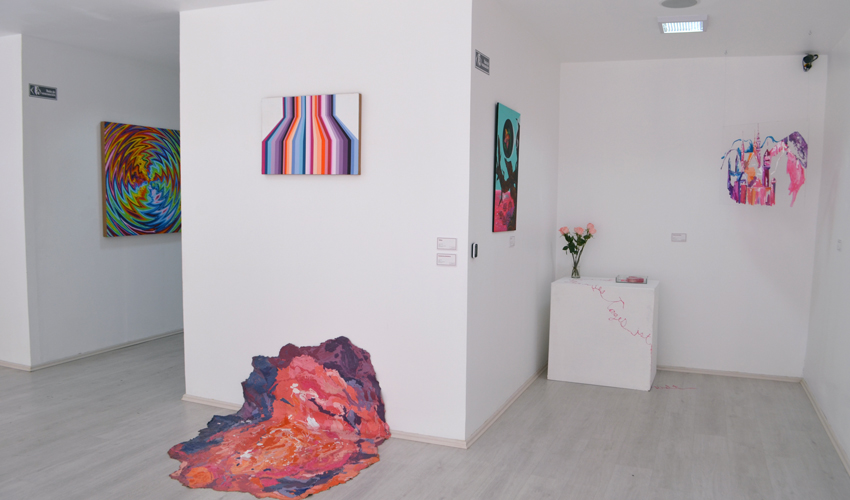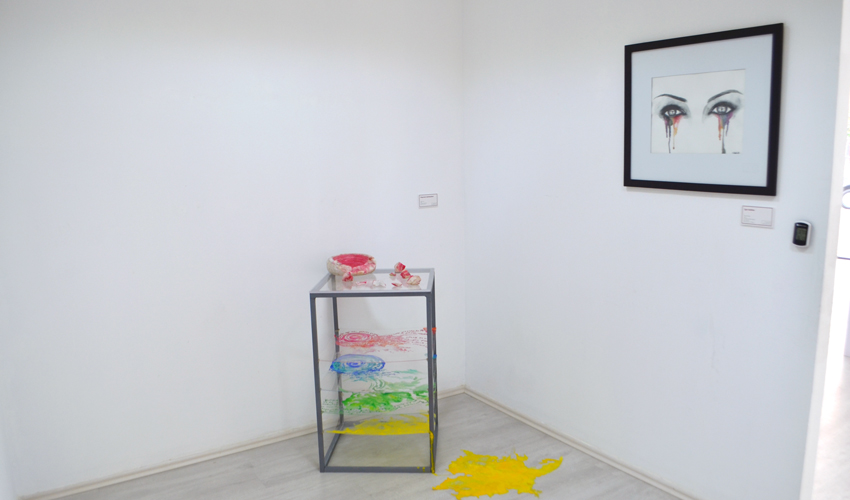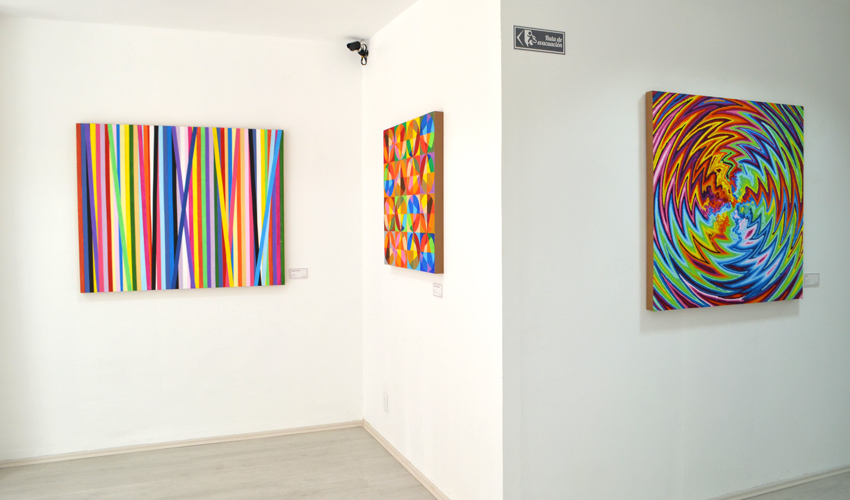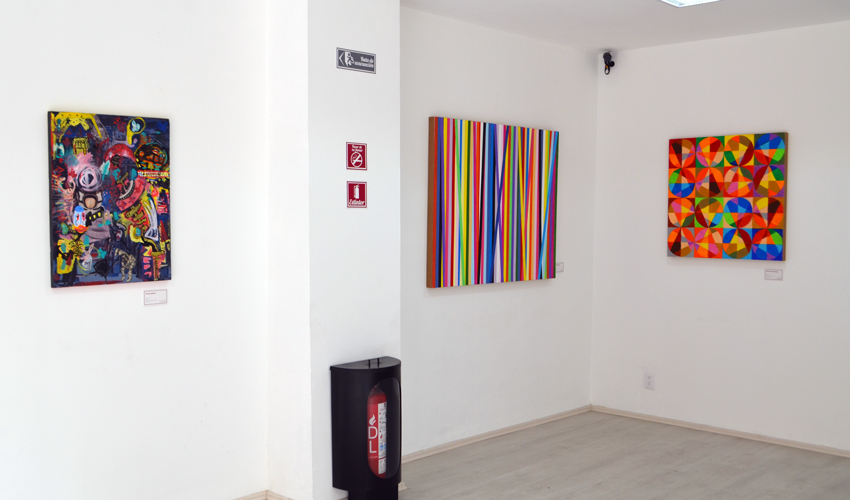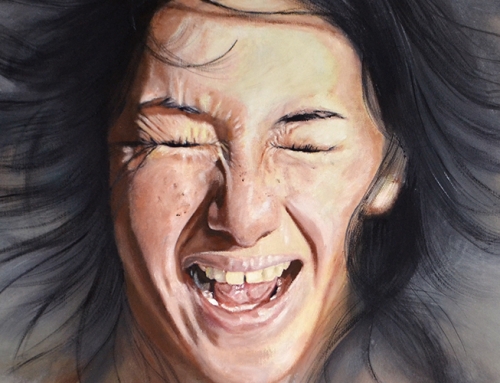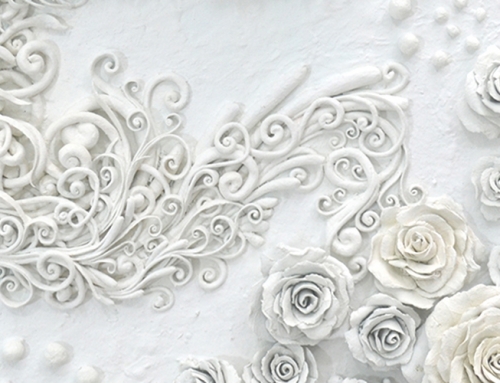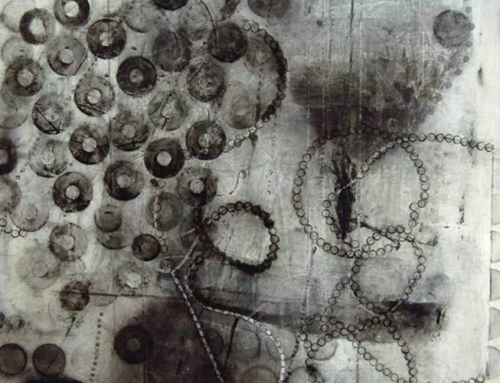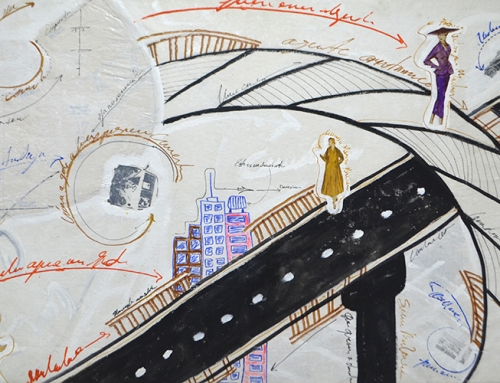Exhibition no. 7.- In living color. Group exhibition, painting and installation. From Thursday, January 14th to Thursday, March 17th, 2016.
Color can become an obsession, joy, and torment.
Claude Monet
Much of representational art tries to interpret the world in a realistic way, mimicking three-dimensional spaces and reproducing object as we see them. However, many artists have adopted another way of seeing reality. Their art does not represent de outside world, nor tries to transport the viewer to another place. Color, either light or dark, bright or dull, do not mean anything else. Color is a subject, beautiful enough and interesting in itself.
Under this premise, we present in this exhibition, 15 works ranging from pure abstraction to a more figurative representation, from a multiplicity of color to a frank exploitation of monochrome.
In this order, there is Splash by Anna Carbonell, and the pictorial installation Integrando individualidad (Integrating individuality) by Ingrid Sosa. These artworks are an exploration of color, in which splotches of different color appear to be there by accident, they invite us to look at the interaction between colors. Both works are based on primary colors, either by mixing as in Carbonell’s work, or by overlapping, as in Sosa’s work.
Along this way of thinking but in more control of the strokes, there is Swirl by Anna Carbonell and Entre Albers y Kandinsky (Between Albers and Kandinsky) by Javier Hugon. In the first case, the artist detonates a vortex that gradually grows generating a radiant energy and creating a whole spectrum of bright colors. Hugon’s work, is a tribute to the first generation of artists who made color, the very subject of the work, and at the same time is a study on the interposition of colors.
With a similar vivacity, the artworks Playing with stripes by Adriana Maar, and Cabeza explosiva (Blast head) by David Cruz, shows a vibrant palette and remind us the avant-garde conviction of thinking color based on its adjacent colors or according to the colors surrounding it. The first one, shows a rigorous representation of the most basic element of drawing, lines. While in the work of Cruz, the images transcend any accurate description while retaining its figurative elements.
Leaving aside the diversity of colors, with limited color palettes, we can find Falling by Adriana Maar and the installation Inundaciones fantasticas (Fantastic flood) by Ingrid Sosa. In Maar’s work, the artist invites us to imagine that the lines of color will continue somewhere else, while in Sosa’s, the color becomes an object that overflows and embrace our reality.
On the other hand, the use of color has entered our vocabulary to help us describe our emotions: «feeling blue», «green with envy», etc. That is what Elia Amador express in Eyes rainbow, where black eyes are weeping colors as a way to convey different emotions.
These emotions can also be seen in the three artworks with roses: Dias sin dolor (Days without pain) by Fernando Navarrete, Ilusiones desbordadas (Overflow illusions) by Ingrid Sosa, Huele a flores (Smell like flowers) by Lola Márquez, and Rebeldia rosa (Pink rebellion) by Lulu Toris. In Navarrete’s work, the vividness of color speeks of the deep concern of the artist about the damage to nature. In Sosa’s installation, the artist talks about her sense of life and her relationship with the world around her. In Toris’s painting, the artist shares the first time she visited a field of roses, representing the intensity of colors seen in nature.
Finally, with pure color, we find the monochromatic work Pink world robot by Eugenio Voirol, in which the artist uses a limited range of color that goes around magenta to show a radiant and vivacious anthropomorphic figure.
